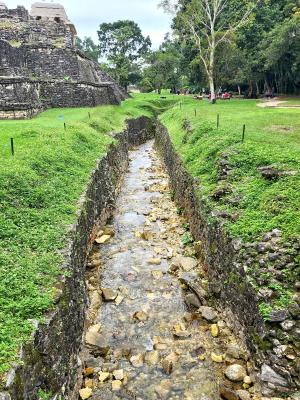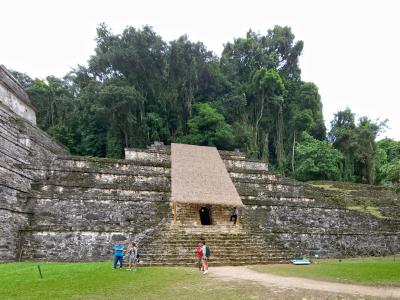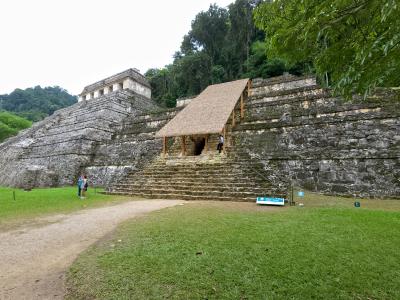Day 8 1/18/2024
Palenque, MX
Frank's Trip
CLICK on any image to enlarge - use mouse cursor to move enlargement it if doesn't fit area
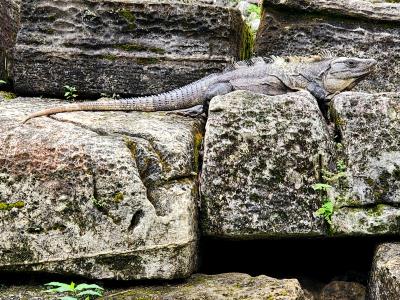
Palenque (Lakam’ha - "Place of Many Waters") Archaeological Site...
Palenque’s settlement dates back to the Middle Preclassic (600 BC-250 BC) as attested to by ceramic shards found at the site. Monumental construction begins by the Early Classic (250-600 AD) where the recorded history of Palenque begins with the earliest recorded king, K’uk’ Bahlam, installed on March 10 431 AD. There followed a nearly uninterrupted succession of kings through the end of the eighth century.
Palenque was one of the earliest sites to merit attention by the Spanish authorities. The first mention of the site is from Pedro Lorenzo de la Nada in 1567. A vague report of stone houses dating from around 1746 was made by Father Antonio de Solís, priest of the town of Santo Domingo de Palenque.
Palenque was a Mayan city-state and a rival of Calakmul. It’s home to what is considered to be some of the finest Mayan architecture ever built, including extensive hieroglyphics which tell the story of the royal family that lived and ruled there.
ABOVE: One of the native inhabitants
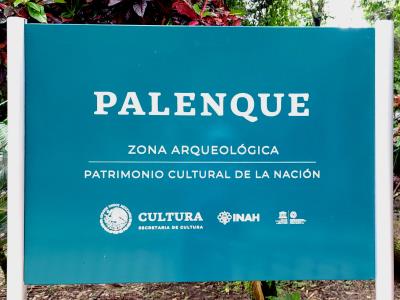
 Pre-Hispanic City & National Park of Palenque
Pre-Hispanic City & National Park of Palenque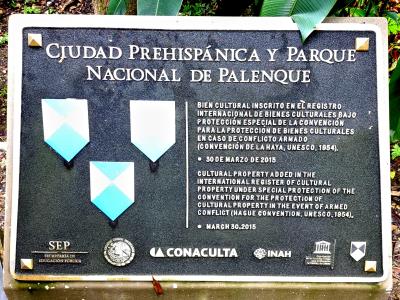
Temple of the Skull
The name of this temple is due to a relief fragment located in the base of a pilaster at the access. The relief represents a skull and was originally painted in red and blue.
A grave with a rich offering was found under the temple.
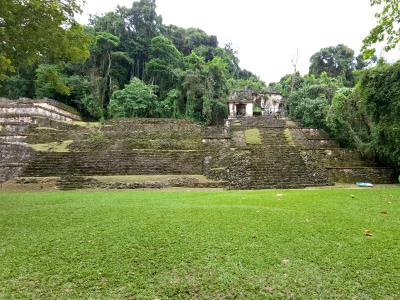
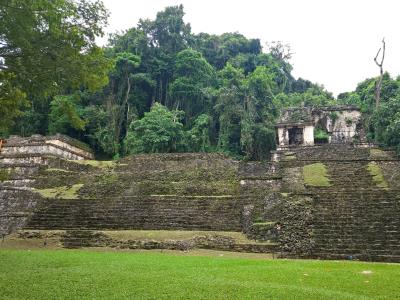
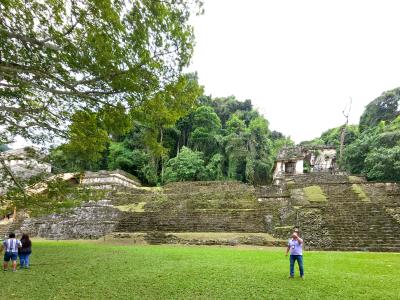
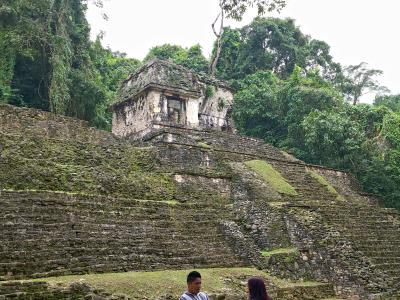
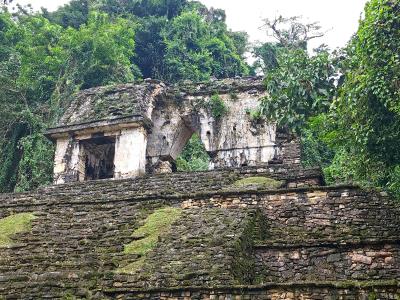
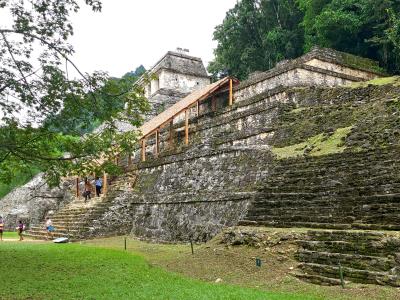
The funerary chamber of a feminine burial coated with red cinnabar and a trousseau with many pieces was found during the excavations. It was called Red Queen since it possessed all the attributes contained in a royal grave and because of the red color of the mineral that covered her remains.
Later studies allowed postulation that the buried character in the sarcophagus corresponded to the lady Ix Tz'aka'ab Ajaw, whose epigraphic evidence point at her as the spouse of Pakal the Great.
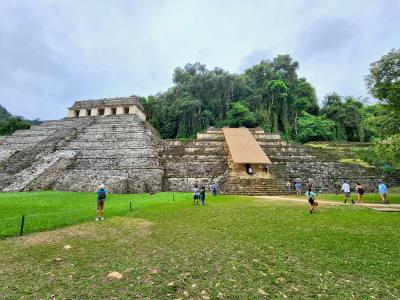
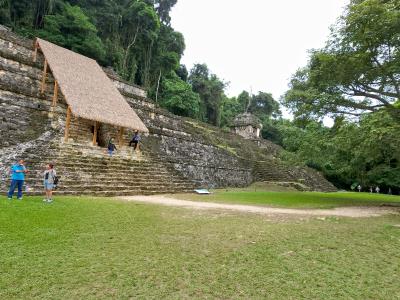
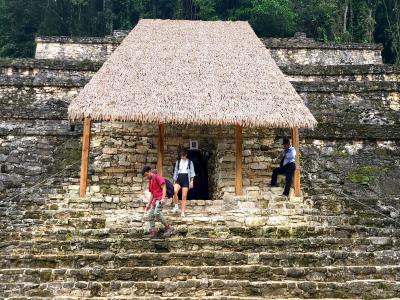
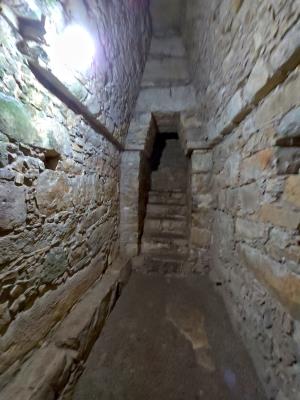
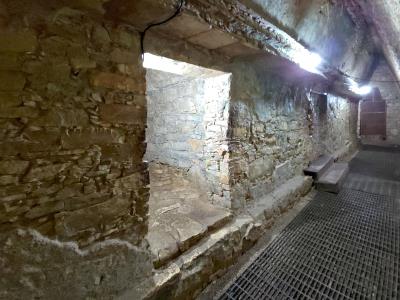
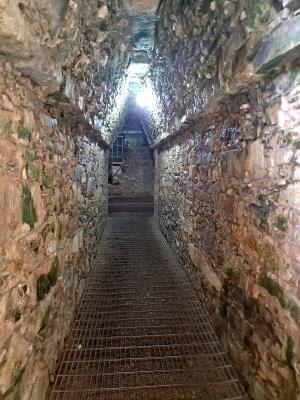
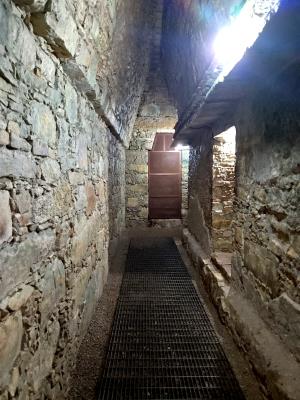
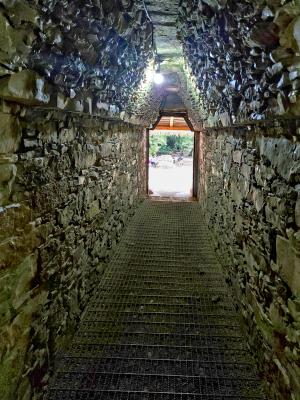
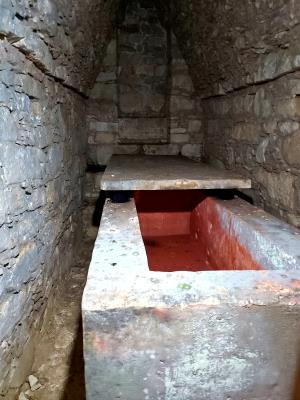
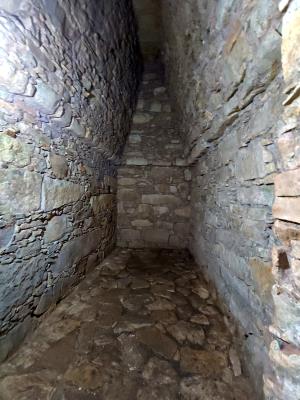
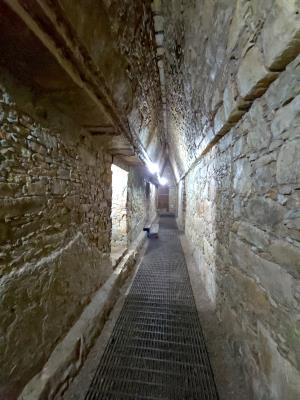
Temple of Inscriptions and Pakal's Grave
Three limestone boards with hieroglyphic inscriptions give its name to this temple. Through its interior one arrives at and impressive funerary crypt ornamented with under reliefs, were the sarcophagus of the Lord of the Solar Shield (Pakal) is located. He ruled Palenque between the years of 615 AD - 683 AD. (Interior not open to public)
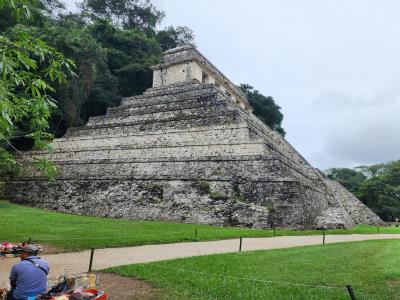
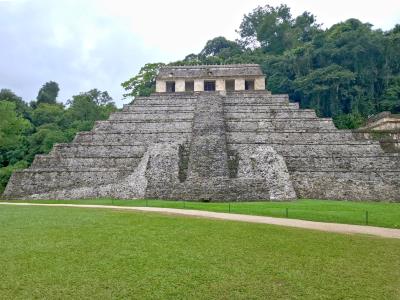
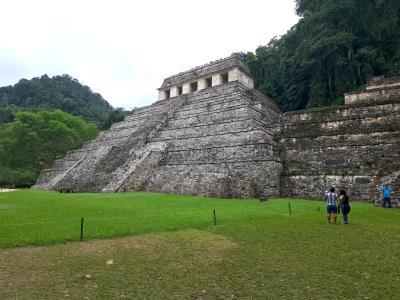
El Palacio - The Palace
The set of structures that comprises The Palace is distributed around inner courtyards forming a complex group of buildings, open spaces, corridors, underground galleries, drainage ducts and a tower that must have been used as an observatory. Any number of architectural changes have been made to the overall structure over a period of more than 400 years.
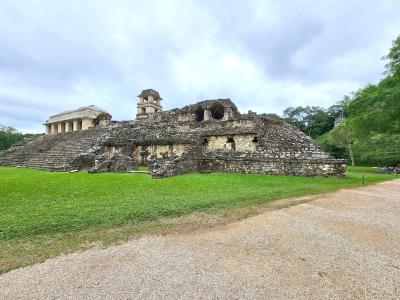
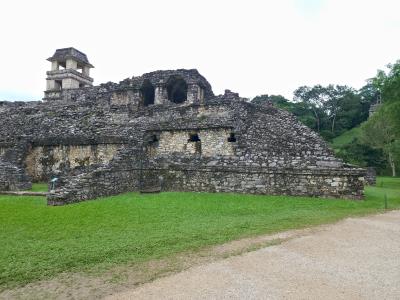
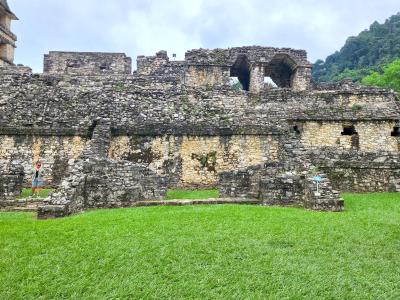
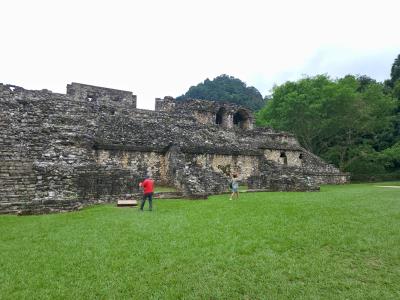
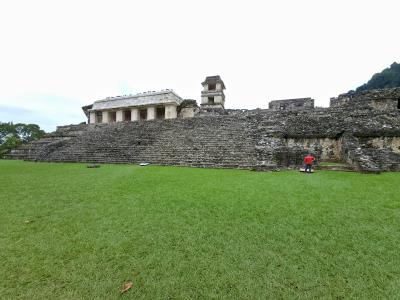
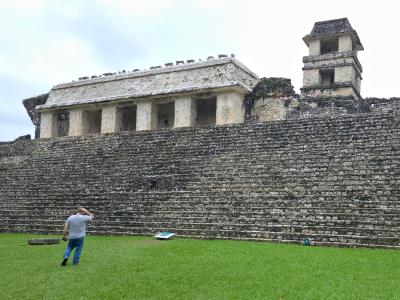
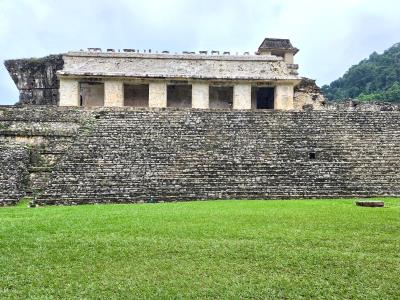
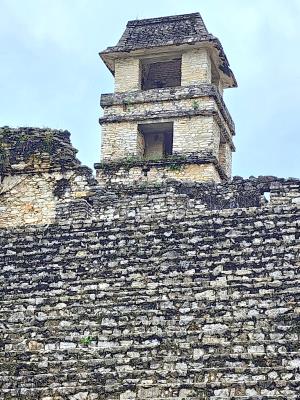
The Palace Tower
It is unique in its type in all the Mayan area. It can be assumed that Palenque's tower was used by members of the ruler's court, even if its specific function is unknown - maybe it was a point of watch or an astronomic observatory.
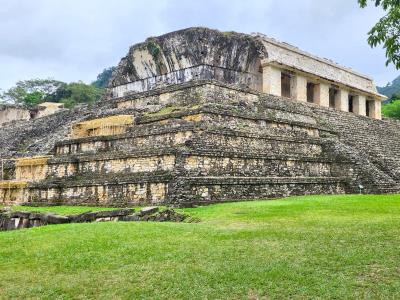
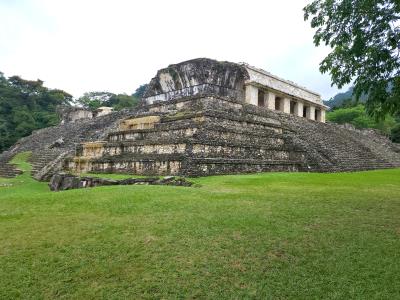
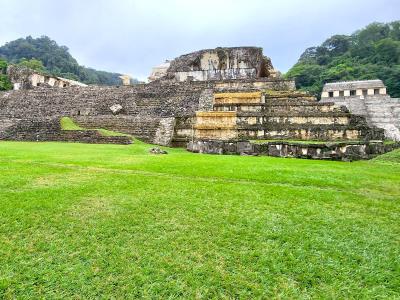
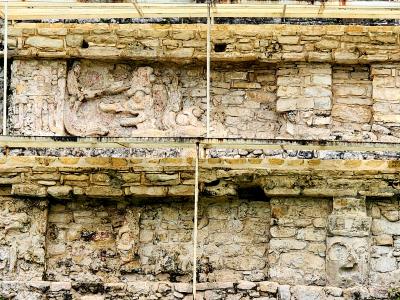
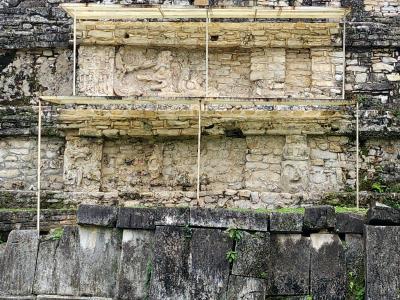
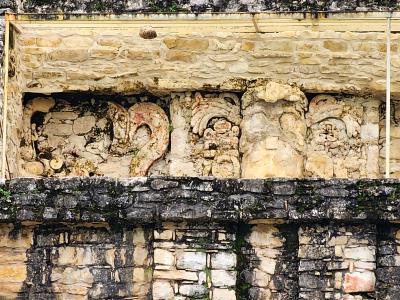
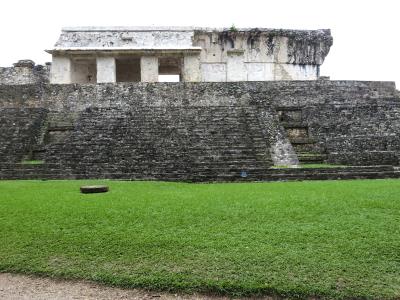
Palace House D
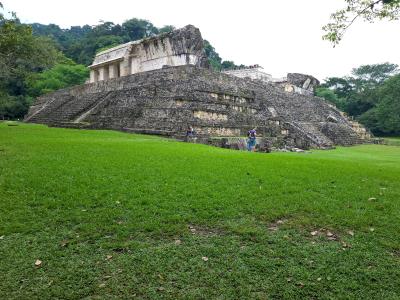
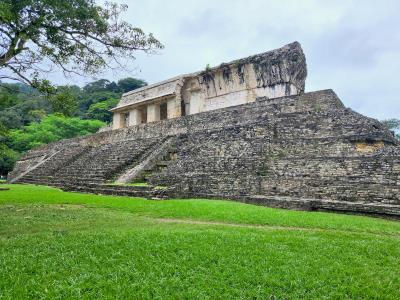
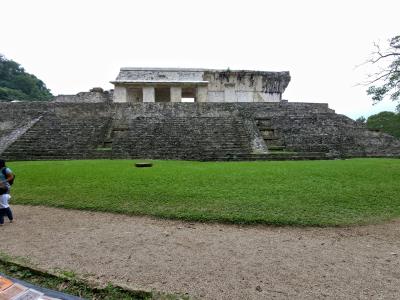
Templo X
This building has a large staircase made of large blocks of carved stone. Its floor consists of a large sole corridor of which only the start of the walls and pilasters are kept.
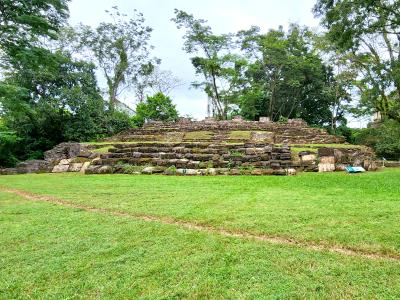
El Conde - The Count
The temple rests on a five-body pyramidal basement. It has a porch with 3 entrances and internal corridor. Under the porch stucco floor, 3 graves with scarce human remains, but with complete offerings were discovered. The building was named after Count Jean Frederick Waldeck who supposedly used it as a room in the first half of the 19th Century, although in fact he lived at the foot of the Temple of The Cross.
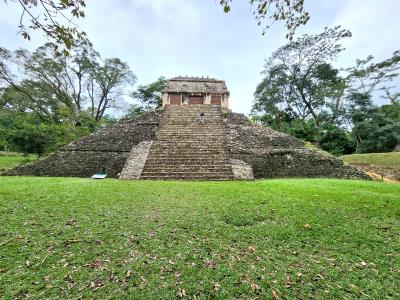
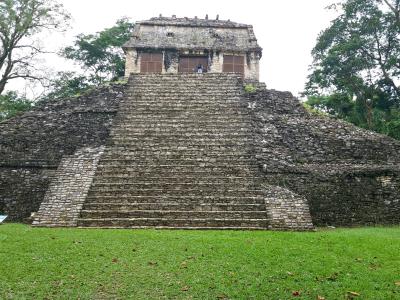
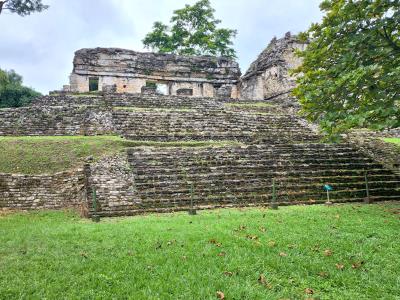
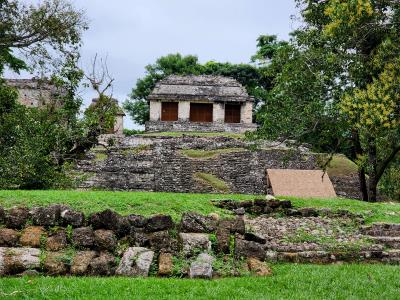
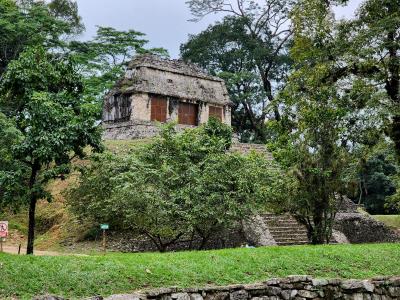
The North Group
It consists of a large platform with 5 temples. These are found in slopes that denote they were built in different moments. It is likely that these temples had been decorated with stucco reliefs in the pillars and friezes.
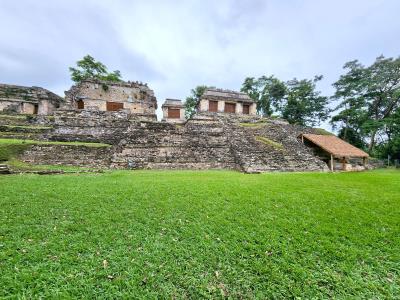
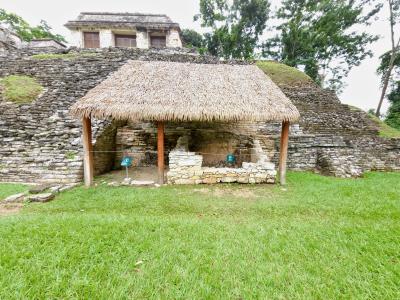
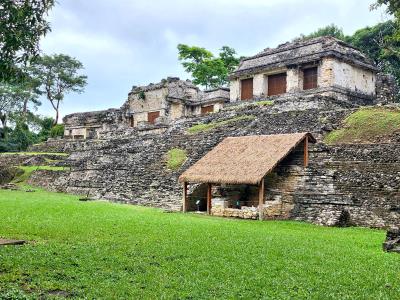
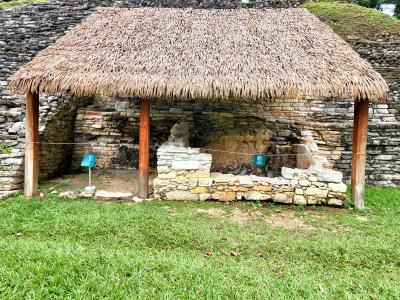
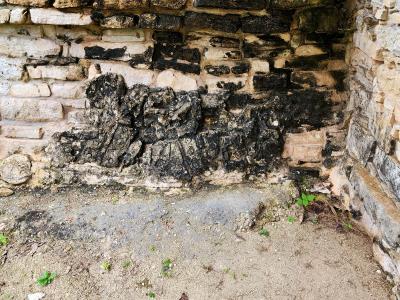
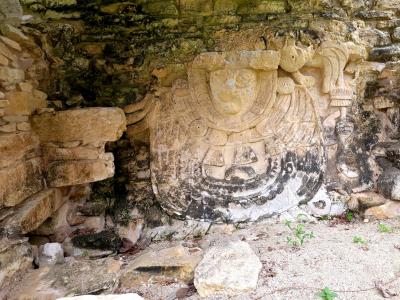
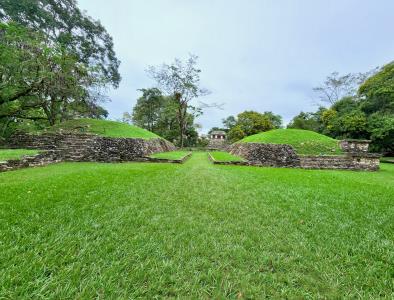
Juego de Pelota - Ball Game
It had a privileged place because it had a profound religious and symbolic meaning. It was a representation of the everyday struggle between contrary forces, antagonist concepts and opposed natural events. The platform slope has large slabs that were probably sculpted with glyphs. The typical stone rings were not found and therefore it is supposed that the rings used were made of wood.
